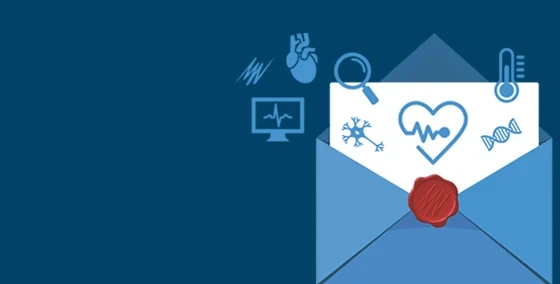
Many of us will look back on our years at University as the ‘time of our lives’ - a time to meet new people, learn new things, and most of all - put off having to make any big life decisions... But after spending 4 years completing a bachelor's degree only to realize the job opportunities waiting for you at the other end weren’t all you’d hoped they’d be - you might be feeling a little cheated.

Rachel Klaus, now the Head of Content for the medical education company Touch of Life Technologies (ToLTech), found herself in a similar position after completing her undergraduate degree in Human Physiology. She did what many of us do when we are confronted with this reality - sign up for a postgraduate degree in the hope of finding a more interesting career path!
Despite seeming like the more challenging option to take, it was here that she chanced upon a unique anatomy career with ToLTech where she helps create 3D digital cadavers for a living! We talked to Rachel about her role within ToLTech as a modern-day anatomist and her passion for dissection.
Who is ToLTech?
ToLTech is a medical education company who produces ‘interactive anatomical software for teaching, learning and reviewing anatomy as well as cutting edge medical procedure simulators for enhancing the learning of health care students and professionals.’
Current Head of Content, Rachel Klaus, became involved with the company during her postgraduate masters program in Human Anatomy. After hearing a lecture from Vic Spitzer, (CEO) about his work with The Visible Human Project, she approached him saying “I want to help you. What you're doing is so cool. I want to be a part of it, tell me what to do.”
That summer, she spent most of her time getting the lab up and running and learning the process and logistics behind slicing and imaging frozen biological tissue.

ToLTech's VH Dissector software for medical education.
One of her first projects was helping to turn Susan Potter into a visible human. For more information about The Visible Human Project and Susan Potter, check out our blog.
In addition to modeling human anatomy, ToLTech’s technology can also be applied to animals.‘We have imaged a tenrec, which is a member of the hedgehog family. It’s a little rodent that lives only in Madagascar. The individual who studies them came to us and said: “No one understands these animals and no one knows the anatomy, we should 3D model this.” So we did.’
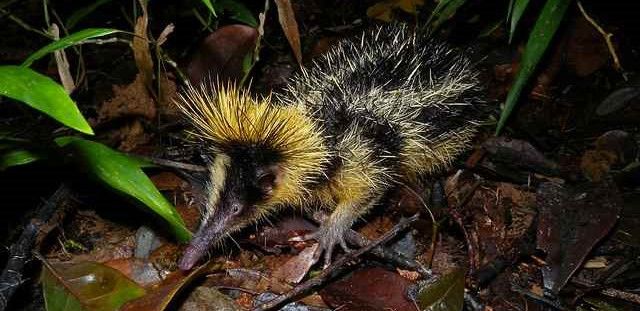
Lowland Streaked Tenrec, Mantadia, Madagascar. Credit: Frank Vassen (CC BY 2.0).
‘I'd never even heard of this creature until I found myself shaving its body. They have two uteri and can carry two different litters of different gestational ages simultaneously - How amazing is that? I learned all this weird stuff about a creature I would have never known if I wasn’t in this job.’
Learn more: How ToLTech create digital anatomical models
What got you interested in Anatomy?
'In hindsight, I have some childhood experiences that explain my interest in anatomy. When my Dad would return from bird hunting I was always so curious to see what he would pull out of the inside of these animals and wanted to see what it felt like. What was the texture? Was the eyeball hard or rubbery?
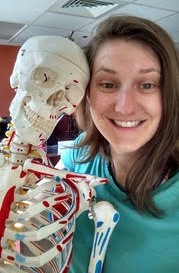
I didn't grow up ever thinking ‘I'm gonna do this’. I went to college undeclared. I thought I wanted to be a marine biologist but quickly changed my mind. So for two years of college I didn't know what I was doing and then I thought, the only subject I really really really liked in high school was Anatomy. So decided to start taking some of pre-health classes. Then I heard that we had one of the best dissection labs in an undergraduate institution, and that sold me. I was like “okay I'm going to take these classes” and that's what I majored in. When I finished college I wanted to go to Physician Assistant school and work in surgery.
However, after some time working as an EMT I realized that A) I don't really like patients that much or working in the clinic/hospitals and B) I like Anatomy and healthcare but I don't want to be a clinician or a teacher. So I found this Master's program at the University of Colorado and wanted to see where it would lead me, and here I am! Now I get to work with a company that strives to generate the best learning experience in a virtual space. We are at the forefront of this new and developing technology, it is all very exciting.”
What’s to coolest dissection you have done?
'My favorite dissection I performed was probably during my master's capstone. I dissected a brain, using a technique where you have to freeze the brain and then thaw it. This causes the water molecules in the white matter to align into a stiff material. In the gray matter, the water molecules are all dispersed, so when it freezes it becomes mushy. This means you can easily dissect away the grey matter and look at white matter tracts.
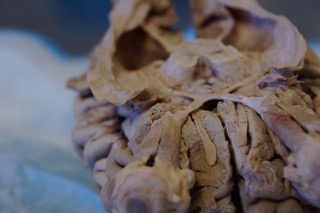
Specifically, I wanted to look at the pathway that visual information travels from your optic nerves back to the occipital lobe in the back of your head. It’s buried amongst a bunch of other white fiber tracts, so you have to carefully dissect away the layers. My capstone project was about plastination and its utilization in medical education so we eventually plastinated this brain to preserve this awesome dissection. It is probably the coolest dissection I've ever done.'
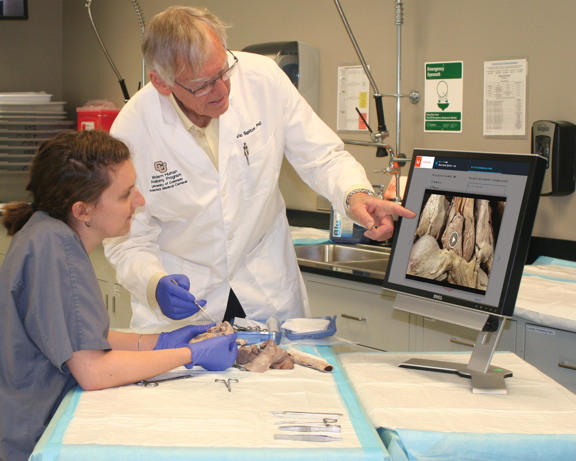
Rachel and her boss, Vic Spitzer carrying out a dissection.
After experiencing the reality of a dissection lab - would you still donate your body to science?
Definitely. For sure. I am such an advocate for hands-on and exploratory learning. Personally, I think cadaver learning is the coolest way to learn anatomy. Once I am finished using my body, I would be honored to help someone in some way. Whether that is through organ, tissue, or full body donation, sign me up!
Lt Anatomy Collection Release!
Rachel and her content team have been working very closely with our Instructional Design team here at ADInstruments to produce the Anatomy Collection within our online education platform Lt! With a complete curriculum of ready-to-use lessons and labs for teaching human anatomy, the Collection includes rich and detailed histology and dissection imagery and video for teaching and assessments. Combine with our Physiology Collection, and you have a complete A&P course on a single delivery platform.
Click here to take a look inside the Anatomy Collection
Related: Check out some of the top features from our favorite dissection and histology labs, the Heart Dissection lab and the Bone and Cartilage Histology lab.
More for anatomy educators
Anatomy Month: Anatomy and Art: Leonardo da Vinci – The science behind the paintings
Anatomy Month: How digital cadavers open up new teaching methods for medical educators
Resources for Educators: The HAPS Anatomy Learning Outcomes
Free Images: 10 free high-quality anatomy images for educators to download and use!
Anatomia Italiana: Professional Development in Italy that combines anatomy and art

